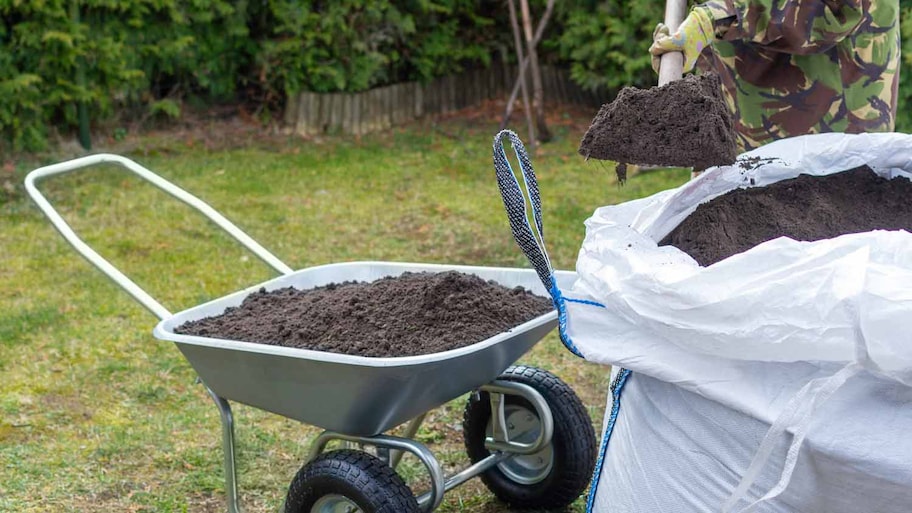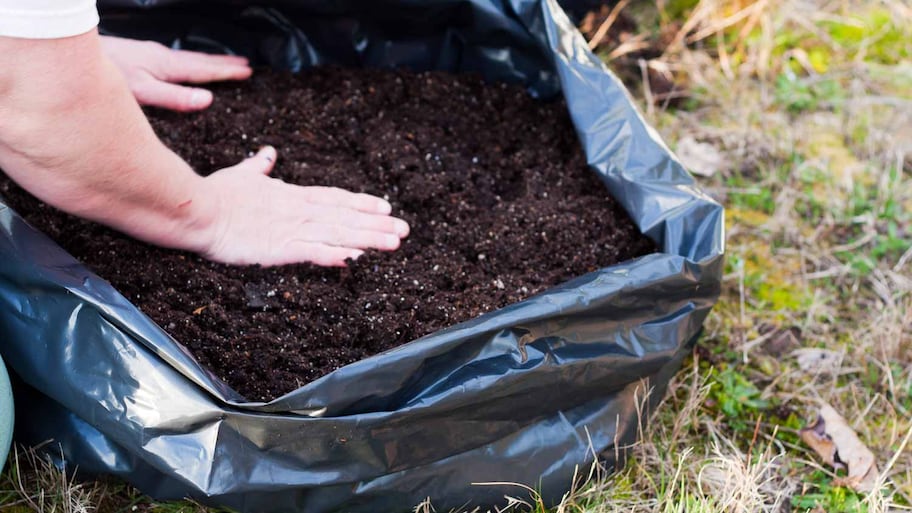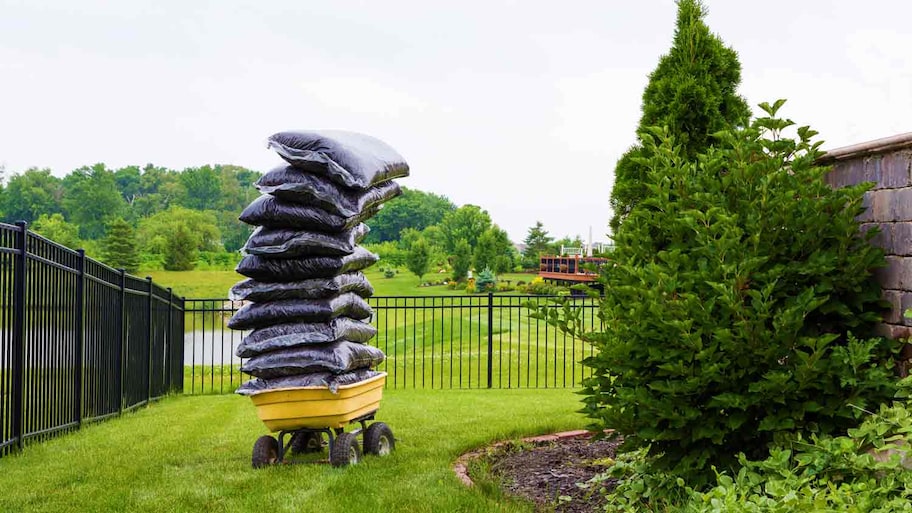How to Dispose of Dirt Properly
Make it easier and cheaper to clean up your yard


The yard has been ravaged by a landscaping or construction project, and now you’re left with a mountain of dirt that seemingly has nowhere to go. You’ve already put in time, sweat, and money to get to this point, so how much more until you’re done? We’re here to help you through the process by explaining the easiest and cheapest ways to dispose of dirt. We’ll also break down the different kinds of dirt, and how much removal will cost so you have all the dirty details.
What Type of Dirt Do I Have?
Before you can select the best removal method, you need to know what kind of dirt or soil you’re dealing with.
Clean Fill Dirt
Clean fill refers to dirt that contains non-hazardous materials. This could be a combination of rock, clay, sand, soil, and more. Clean fill can also contain small pieces of brick and concrete. The reason it’s called “fill” is because it can be reused to fill holes or raise low areas in other landscape or construction projects.
Non-Clean Fill Dirt
This is dirt that cannot be reused in future construction projects. Dirt is considered non-clean if it contains dangerous materials like glass, plastic, and metal. If you have an abundance of non-clean fill dirt, it’s likely the result of a demolition project. Non-clean fill is harder to dispose of than clean fill, but you still have some options.
Topsoil
Topsoil is the top layer of the earth’s surface, anywhere from 2 to 10 inches deep. It’s rich in nutrients and organic material, which makes it excellent for growing grass, plants, and crops. The layer beneath topsoil is called subsoil—it’s essentially the same as fill dirt, which isn’t suitable for growing. As a result, topsoil is more expensive to purchase per cubic yard than fill dirt.
"Illegal dumping poses significant environmental hazards. Hazardous materials can contaminate soil, waterways, and ecosystems, leading to pollution, habitat destruction, and harm to wildlife. Additionally, improperly disposed of waste can contribute to air and water pollution, posing health risks to humans and animals. "
— Sean Foley, President of redbox+ Dumpsters
Contaminated Soil
Soil is contaminated if it contains hazardous chemicals or minerals exceeding a normal or safe amount. Common contaminants include asbestos, arsenic, radon, lead, petroleum, and certain pesticides. There are several ways to test your soil, ranging from $15 test kits to professional testing, which costs around $1,400 on average. Soil contamination may occur from chemical leaks, natural disasters, industrial runoff, oil spills, and improper waste disposal. If you are trying to dispose of contaminated soil, there are very specific guidelines to follow, which we’ll go through below.

How to Dispose of Dirt 7 Ways
Now that you’re up to speed on the kind of dirt you’re working with, you can look through your disposal options to find the best fit.
1. Recycle It

Bringing leftover dirt to a recycling facility is one of the most common disposal methods, as well as one of the most practical, as it ensures the dirt will be reused rather than go to waste. Most recycling facilities only accept clean fill dirt and won’t take non-clean fill. They likely accept other yard debris, though, in case you are wondering how to dispose of tree branches, too. Expect a drop-off fee between $30 to $70 per ton.
2. Bring It to a Landfill
Dropping off dirt at your local landfill is another alternative, and it’s similar in cost and effort to going to a recycling facility. The main difference is that the dirt won’t be reused, so you’re not doing the environment any favors.
Landfills usually charge $30 to $50 per ton as a drop-off fee for dirt. Keep in mind that some landfills measure dirt in yards (an increment of volume) instead of tons (an increment of weight). Luckily, the prices are fairly similar, as one yard of dry dirt weighs roughly one ton. Wet dirt weighs more, however—possibly over 3,000 pounds per cubic yard.
To get dirt to a landfill or recycling center, you may need to rent a roll-off dumpster, which will increase overall expenditures. The cost to rent a dumpster varies by size, but a 10-cubic-yard dumpster costs around $380 to rent per week or $40 to $70 per day. Smaller dumpsters naturally cost less. If the amount of dirt in your yard is small enough, you might be able to transport it in dumpster bags or trash cans.
3. Reuse It

Before hauling the dirt elsewhere, you may be able to reuse some of it for a home project. This saves you the cost of buying dirt yourself in the future, and it cuts down on potential drop-off fees at a recycling center or landfill. Composting is an easy way to reuse at least a small portion of leftover dirt, especially if it contains a lot of nutrient-rich topsoil.
Fill dirt can also be used as a sturdy layer of subsoil in a garden; it isn’t ideal for growing, however, so you’ll need topsoil or mulch for the top layer. A more large-scale option is to reuse dirt when leveling your yard, perhaps to fix low spots, remove an inground pool, or construct a porch or patio.
4. Hire a Junk Removal Company
If the thought of hauling several thousand pounds of dirt and soil sounds unbearable, you can hire a junk removal company in your area to do the job. Junk removal companies usually charge by the truckload, with prorated fees if the load only takes up a portion of the truck bed. A double-axle dump truck holds about 14 cubic yards, which equates to roughly 28,000 pounds of dry dirt.
On average, the cost to haul a full truckload is between $400 to $800, although it varies widely by location. A half truckload may be closer to $250. The price to hire a junk removal company varies much more than the alternative of renting a roll-off dumpster and doing it on your own, which is why we recommend getting multiple estimates beforehand.
5. Sell It
There are multiple websites where you can list clean dirt for sale, including your local online marketplace. This is the most cost-effective way to dispose of dirt because you’re actually making money off of it. A significant downside of this route is that there’s no timeline or guarantee you will find a buyer, so the dirt could stay in your yard much longer than you want.
6. Donate It

You can also donate the dirt if you’re unable to find someone to buy it. Once again, online marketplaces allow users to list free dirt for pickup. There are even websites that are solely dedicated to facilitating the transfer of free dirt. Another idea is to reach out to landscapers, plant nurseries, or construction companies directly. There’s a chance these businesses will pick up the dirt themselves, saving you the time, effort, and cost of delivering it.
7. Contact Local Government
This suggestion mainly applies to homeowners who need to dispose of contaminated soil. Though rare, if you have an excess of loose contaminated soil, you cannot dispose of it through standard means. Instead, contact your local government, whether city or county, for instructions. You might need to get the soil tested before disposing of it, but once it’s clear what materials are contaminating the soil, you can figure out where it needs to be taken.
Tips for Dealing With Dirt Disposal Properly
Tackling landscaping projects, including learning how to dispose of dirt in large quantities, requires a bit of planning. In addition to finding the right place for dirt disposal, here are some tips for ensuring the process is a success.
Purchase either yard waste bags or hazardous waste bags before beginning your project.
Rent or purchase equipment appropriate for heavy-duty ground removal. These may include small excavators, soil tillers, or a bulldozing attachment to your mower.
Avoid removing large amounts of soil on or just after a rainy day. It will be easier to remove and package soil when it is dry or slightly moist.
Create a separate plan for disposing of rocks in the soil or reusing them for landscaping projects.
Make a plan to dispose of your dirt before you start your project to avoid piles or bags of debris taking up space on your lawn.
Chat with at least three yard cleanup pros to determine the best rate before signing a contractor.
DIY vs. Hiring a Pro to Dispose of Dirt
Learning how to get rid of dirt is not complicated, but it does require more foresight than you might think. You can save around $250 if you need to dispose of about half a truck of dirt. Keep in mind that recycling centers and landfills will still charge homeowners to drop off dirt on their own, but it will be far less than the cost of a junk removal team.
All that being said, landscaping, junk removers, and local yard cleanup crews can remove the guesswork from complicated projects. If you don't have the time to test, package, and lug your dirt across town—particularly during a large garden makeover—this can be a great way to simplify the job.
Frequently Asked Questions
Soil is just one of the items you shouldn't put down a garbage disposal. Garbage disposals are only meant for soft, non-fibrous foods. Large amounts of topsoil, dirt, or rocks will damage the blades of your garbage disposal or clog the pipes. If a small amount of dirt goes down the drain as you repot a plant, you shouldn't have to worry, but never dump a whole pot of soil in the sink for fast disposal.
Only throw soil in a dumpster rental if you have permission in your contract to do so. Organic materials such as soil often make the list of items that shouldn't go in a dumpster, but this depends on the agreement. Some dumpster companies will accept non-contaminated soil as well as rocks, yard debris, and compost.
Break up hard dirt in your yard with popular methods such as core aeration or manual aeration with a spade, mini excavator, or pitchfork. You can also alter your soil to keep it from compacting in the future. Adding compost, groundcover plants, or aeration granules—preferably made of organic materials—can also soften your ground and encourage water saturation.
